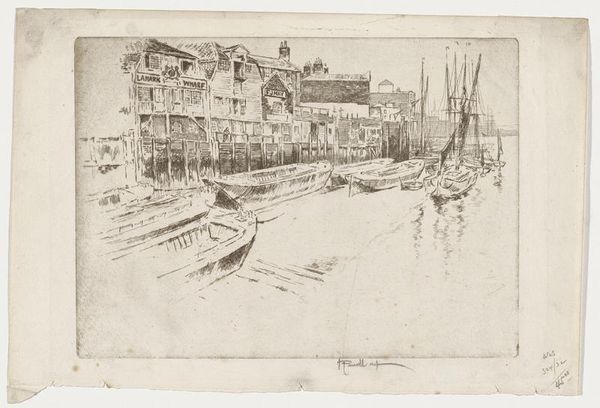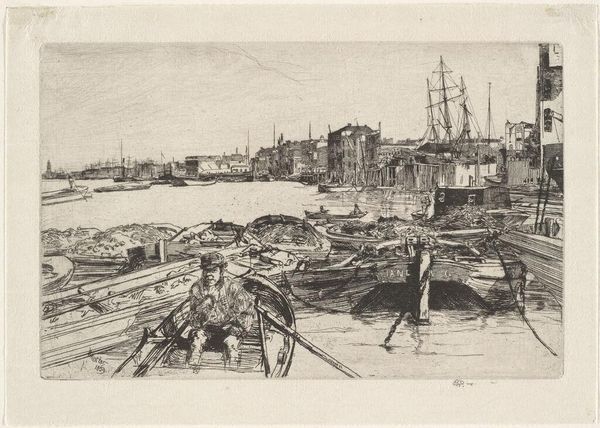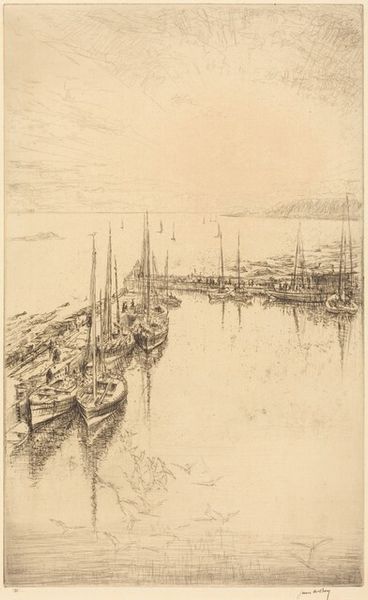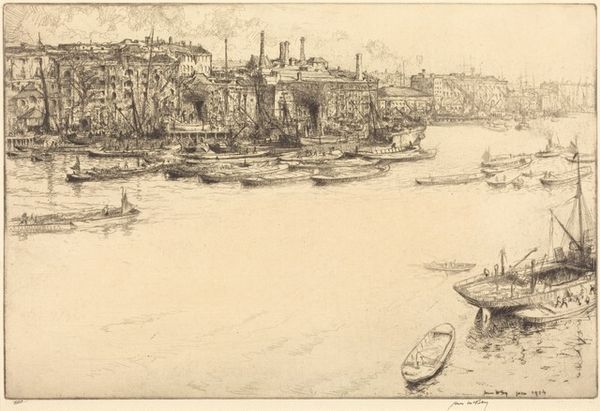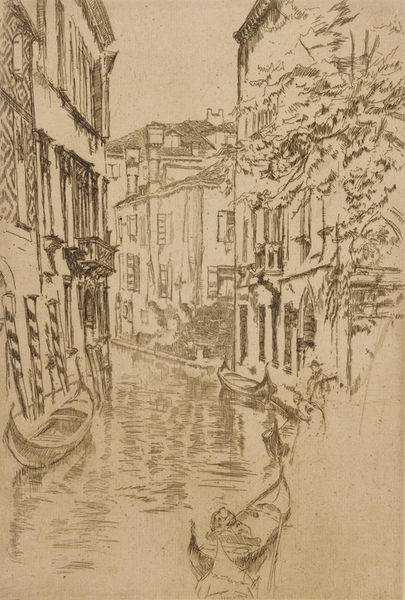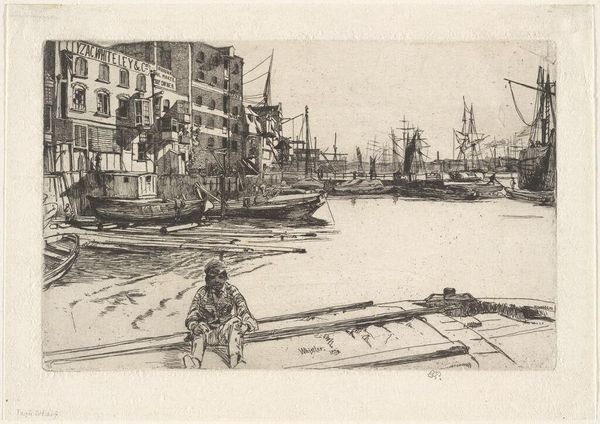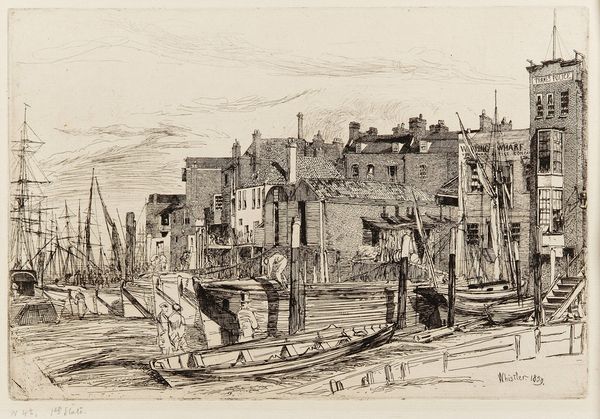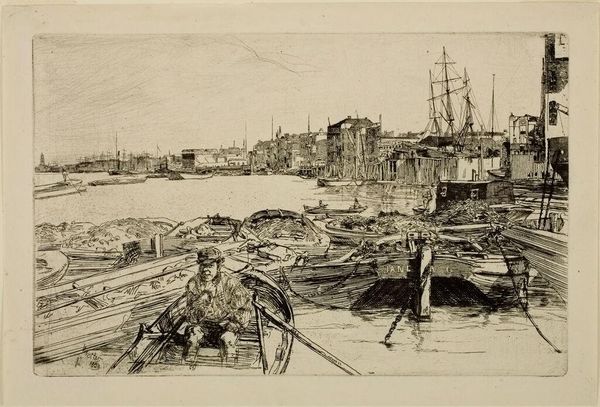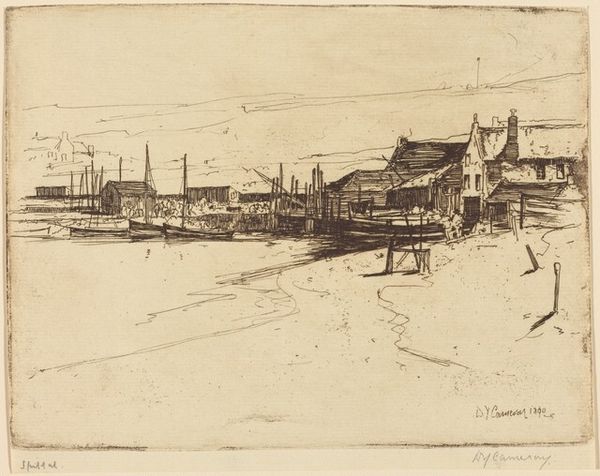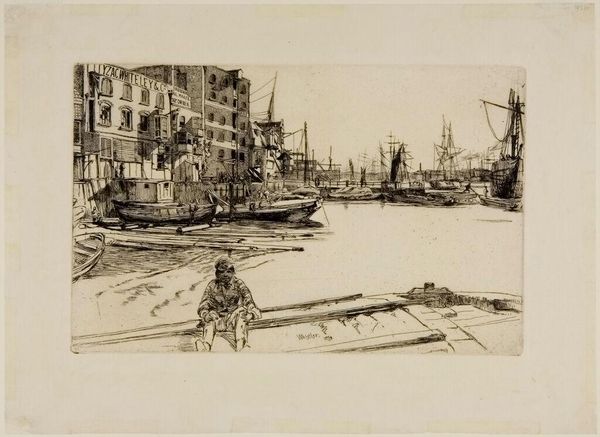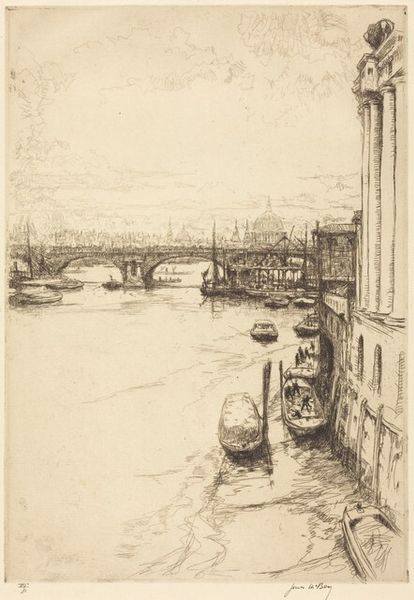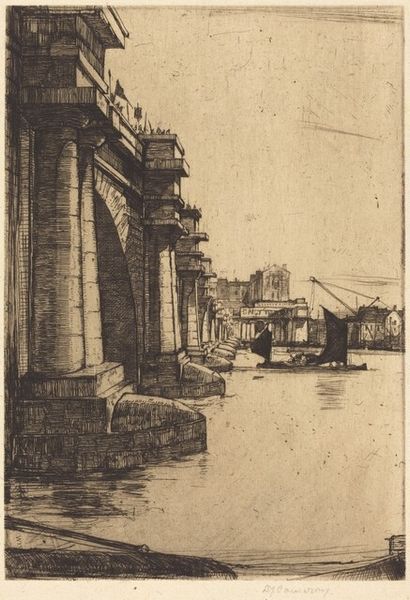
print, etching
# print
#
etching
#
landscape
#
pencil drawing
#
line
#
cityscape
Dimensions: plate: 40.01 x 26.67 cm (15 3/4 x 10 1/2 in.) sheet: 51.12 x 33.66 cm (20 1/8 x 13 1/4 in.)
Copyright: National Gallery of Art: CC0 1.0
Curator: John W. Winkler's etching, "St. Paul's from the River," made in 1927, presents a finely detailed cityscape of London. Editor: There’s something about the density of the lines, the cross-hatching, that makes the whole scene feel…gritty. In a way that is evocative and strangely beautiful. Curator: The materiality is certainly key here. As an etching, consider the labor involved, the way he used acid to bite into the metal plate to create this matrix. Think of the economics involved. Who was commissioning these kinds of images? What were the distribution networks for them? How were they consumed? Editor: Right, the process does add depth. Visually, though, I’m struck by how he’s used line to create a sense of depth, particularly the receding lines of the river and the foreshortening of the buildings on the right. How the eye travels back to that distant dome...it’s brilliant. The structure guides everything. Curator: I wonder about Winkler’s intent. He captures the working river, the industrial infrastructure right alongside symbols of commerce and faith in the shape of St. Paul's. Is it celebratory, critical? And who are these dockworkers; what kind of lives did they lead? Editor: Interesting questions. From a purely formal perspective, there’s such a dynamic interplay between the solidity of the architecture and the more ephemeral, almost vaporous sky. The composition balances the density below and that relative emptiness above perfectly. Curator: I agree about the balance but I think that empty space forces one to ponder what filled that space for those working-class people on a daily basis in their economic reality of the period, how their labor made London a world trading center. Editor: I concede that by bringing in our experiences and historical awareness we deepen and enrich the encounter with the art. I think seeing this as simply a landscape understates the artist's understanding of form, balance and shape within a strict economy of means. Curator: Yes, and in acknowledging both our differing interpretations, we further celebrate the work as being complex in representing industrial society and its working-class populace while representing St. Paul's symbolic presence looming in the distance.
Comments
No comments
Be the first to comment and join the conversation on the ultimate creative platform.

